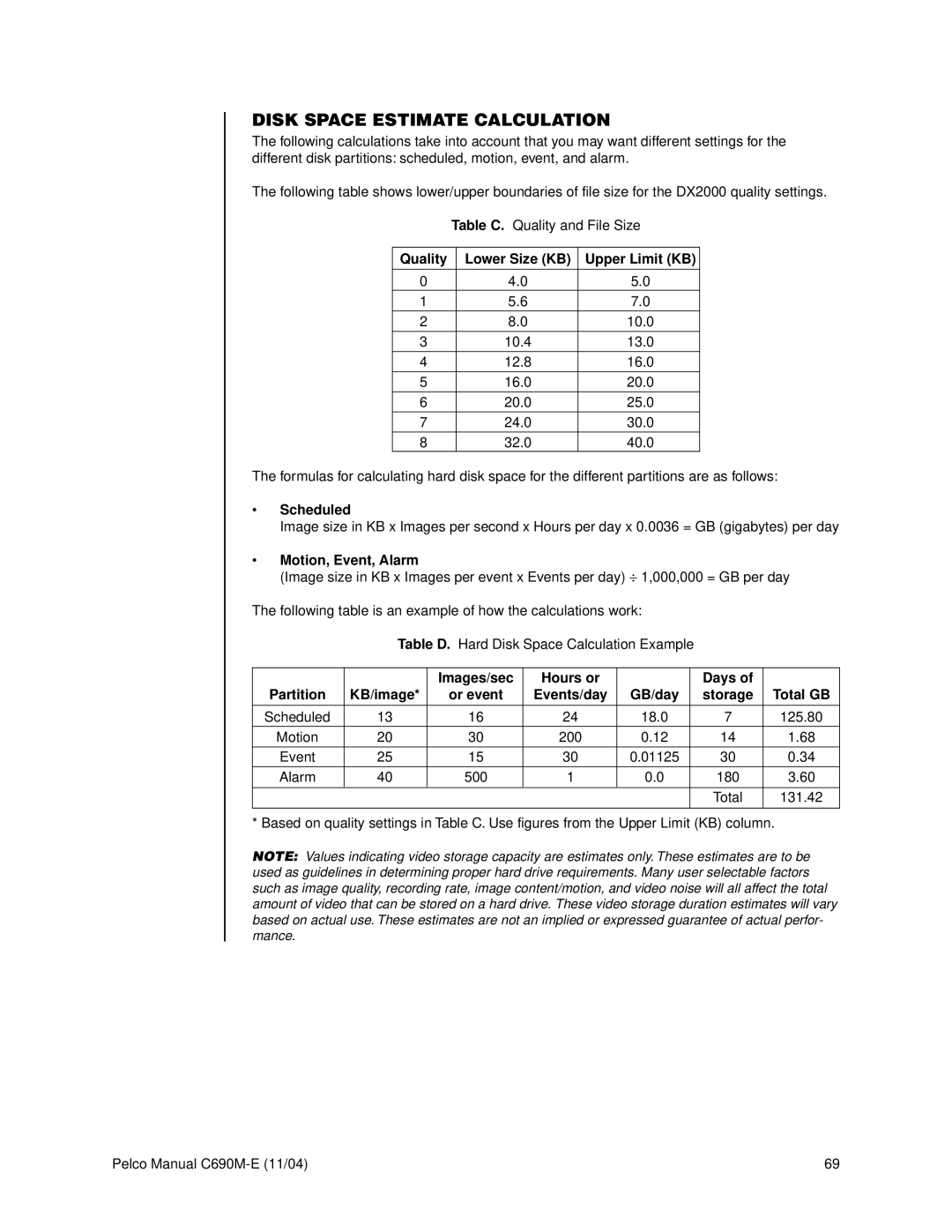DISK SPACE ESTIMATE CALCULATION
The following calculations take into account that you may want different settings for the different disk partitions: scheduled, motion, event, and alarm.
The following table shows lower/upper boundaries of file size for the DX2000 quality settings. Table C. Quality and File Size
Quality | Lower Size (KB) | Upper Limit (KB) |
0 | 4.0 | 5.0 |
1 | 5.6 | 7.0 |
2 | 8.0 | 10.0 |
|
|
|
3 | 10.4 | 13.0 |
4 | 12.8 | 16.0 |
5 | 16.0 | 20.0 |
|
|
|
6 | 20.0 | 25.0 |
|
|
|
7 | 24.0 | 30.0 |
8 | 32.0 | 40.0 |
The formulas for calculating hard disk space for the different partitions are as follows:
•Scheduled
Image size in KB x Images per second x Hours per day x 0.0036 = GB (gigabytes) per day
•Motion, Event, Alarm
(Image size in KB x Images per event x Events per day) ⎟ 1,000,000 = GB per day
The following table is an example of how the calculations work:
Table D. Hard Disk Space Calculation Example
|
| Images/sec | Hours or |
| Days of |
|
Partition | KB/image* | or event | Events/day | GB/day | storage | Total GB |
|
|
|
|
|
|
|
Scheduled | 13 | 16 | 24 | 18.0 | 7 | 125.80 |
Motion | 20 | 30 | 200 | 0.12 | 14 | 1.68 |
|
|
|
|
|
|
|
Event | 25 | 15 | 30 | 0.01125 | 30 | 0.34 |
Alarm | 40 | 500 | 1 | 0.0 | 180 | 3.60 |
|
|
|
|
|
|
|
|
|
|
|
| Total | 131.42 |
|
|
|
|
|
|
|
* Based on quality settings in Table C. Use figures from the Upper Limit (KB) column.
NOTE: Values indicating video storage capacity are estimates only. These estimates are to be used as guidelines in determining proper hard drive requirements. Many user selectable factors such as image quality, recording rate, image content/motion, and video noise will all affect the total amount of video that can be stored on a hard drive. These video storage duration estimates will vary based on actual use. These estimates are not an implied or expressed guarantee of actual perfor- mance.
Pelco Manual | 69 |
